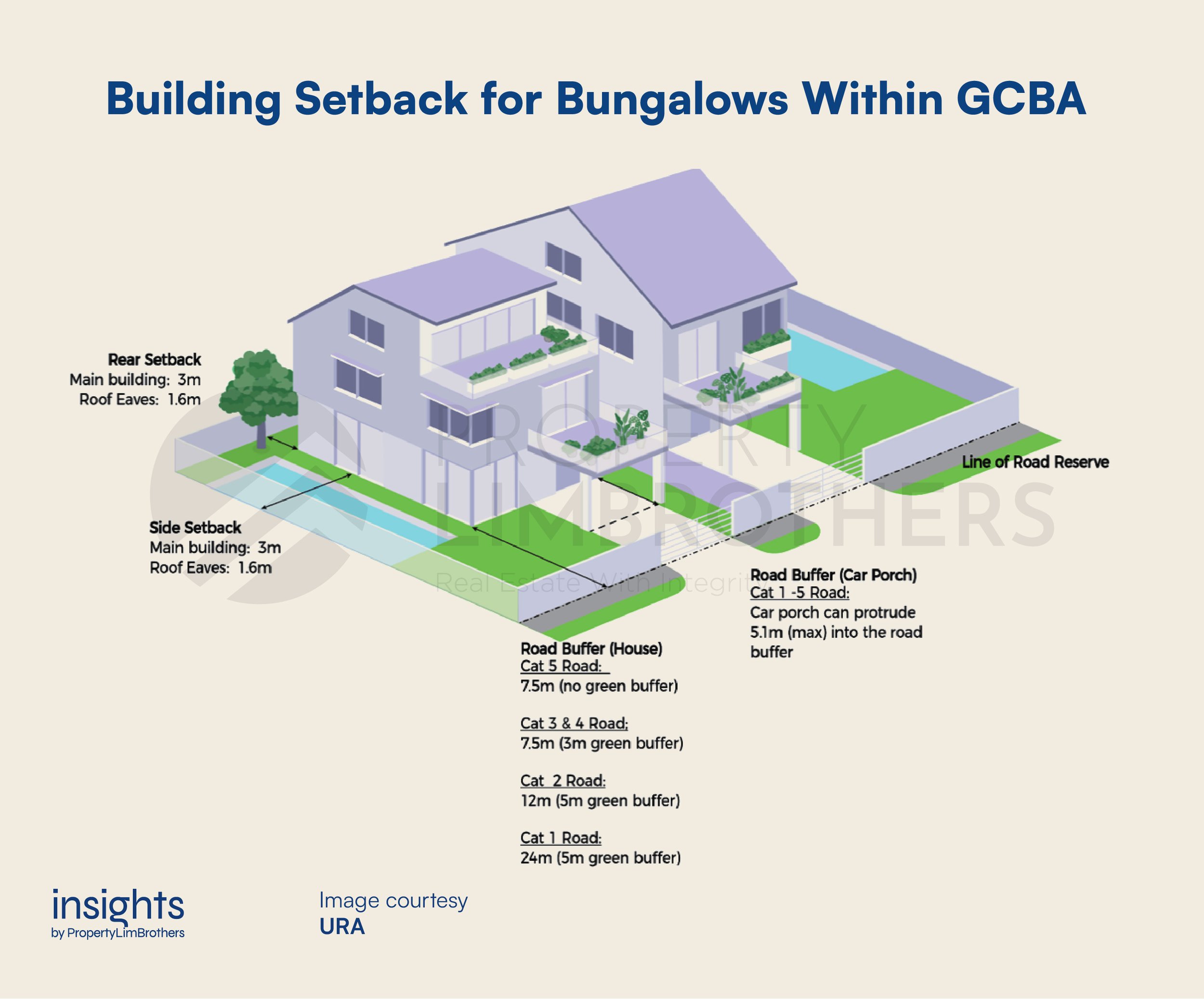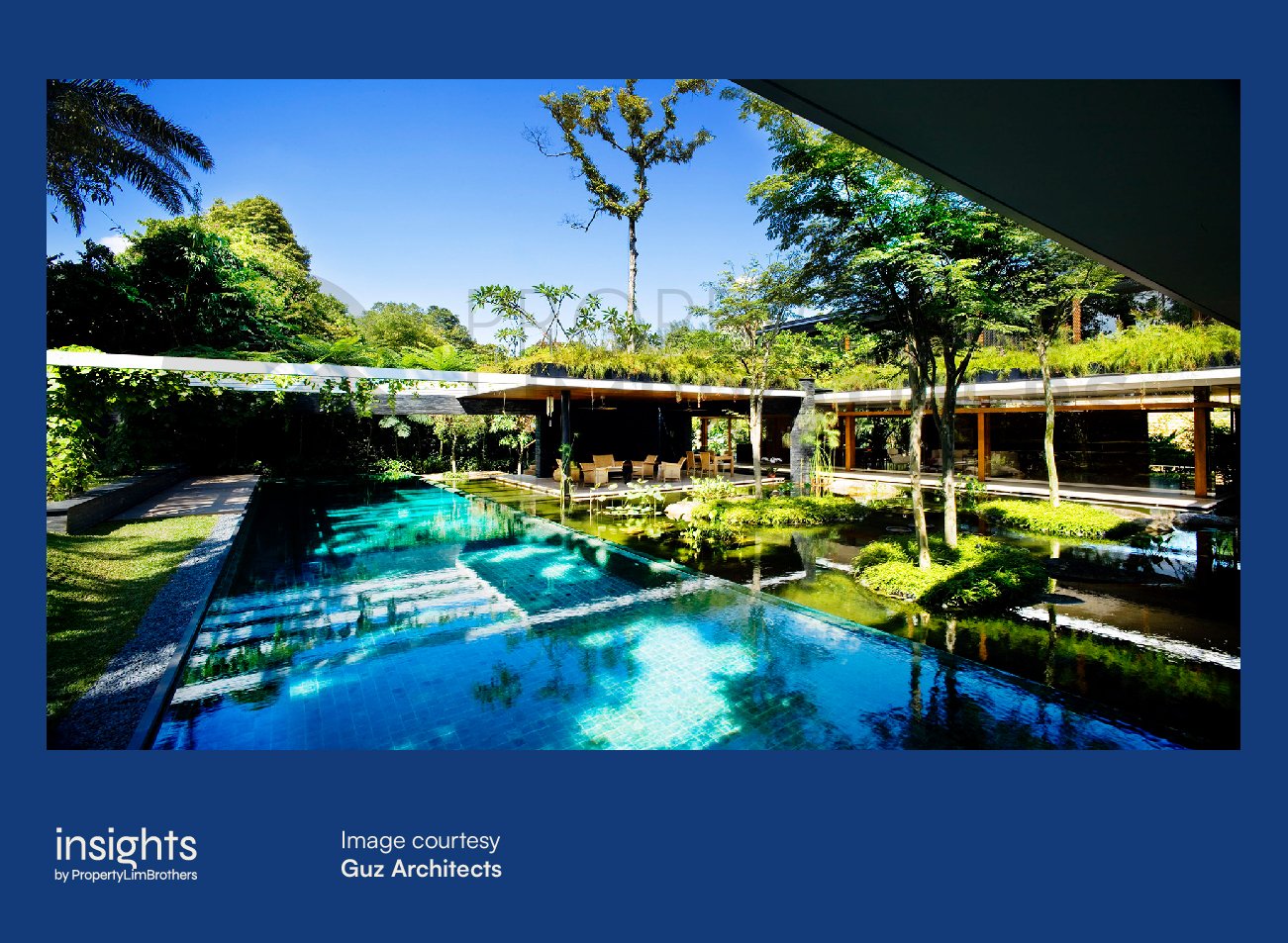
Welcome back to our Landed Luxuries series. In our previous article, we discussed if GCBs are really a good investment, and since its publication, the sentiment on the ground was that not many realise the differences between a GCB and a similarly-sized bungalow in a non-GCB area. After all, both are just different types of detached houses in Singapore.
Therefore, in this next part of our Landed Luxuries series, we shall take a closer look at how owning a GCB is different as compared to owning a bungalow with a large land plot size in non-GCB landed housing areas.
Eligibility of Owning a Detached Home in Singapore
If there is one thing both GCB and non-GCB detached homes have in common, it lies in the ownership eligibility. To own a landed home in Singapore, one has to be a Singapore Citizen. Still, in some cases, exceptions may be given to Singapore Permanent Residents with approval from the Land Dealings Approval Unit (LDAU) under the Singapore Land Authority (SLA). For these exceptions, it is usually the case of exceptional economic contributions to Singapore and permanent residency of at least five years.
Parameter Guidelines
The parameter guidelines are the first key differentiating factor that governs and defines the type of bungalows in Singapore.
These guidelines are classified into four main categories:
-
Plot Size and Width
-
Building Setbacks from Boundary
-
Envelope Control Guidelines
-
Site Coverage
Plot Size and Width:

A larger land plot size with stricter width and depth requirements create a limited supply of GCB land plots. Hence, we can see why GCBs naturally become more highly valued.
Building Setback from Boundary:


Building setbacks refer to the minimum distance between the building structure to the boundary of the land plot and the line of road reserve. A road buffer is the minimum distance required between the building structure and the road it is fronting towards, while a green buffer is the planting area within and along the boundary of a building premise that adjoins a public road.
The differences between bungalows within GCB areas and bungalows outside GCB areas lie in the side and rear setbacks. With wider side and rear setbacks, GCBs get to enjoy a greater sense of privacy and seclusion.

Envelope Control Guidelines:


GCB detached homes are bounded by a maximum height of 12m, as they cannot be more than 2 storeys high, excluding attic and basement levels. On the other hand, detached houses in non-GCB landed housing areas have a maximum height control of either 12m or 15.5m, depending on the landed zoning.
Site Coverage:

A GCB bungalow can occupy only a maximum of 40% of its land plot size, compared to 50% for bungalows outside of GCB areas. The extensive land capacity dedicated to landscaping and greenery is why GCBs are mostly decorated with spectacular lawns and various amenities such as pools and tennis courts.

Locational Criteria
The next factor that makes all the difference is the locational criteria.
The Urban Redevelopment Authority’s (URA) Designated Landed Housing Area Plan outlines that only detached homes within the 39 Good Class Bungalow Areas in Singapore are considered GCBs. These gazetted GCB areas are safeguarded within the prime residential districts of 10 and 11, and the landed estates of Districts 20, 21 and 23, all within Singapore’s Prime Hexagon.
On the other hand, non-GCB detached homes can sit within various types of Landed Housing Areas, such as 2-storey and 3-storey mixed landed zonings, or 2-storey and 3-storey bungalow zonings. These zonings are scattered across the island and are typically located away from the city centre. An interesting point worth noting for detached homes situated within 2-storey and 3-storey mixed landed zonings is that these homes have the possibility of being subdivided into smaller plots of land to build inter-terraces or semi-detached houses. However, this is not allowed in GCB enclaves as they are governed by strict regulations, translating to a controlled supply and volume of available land in GCB estates.
Can a bungalow sitting on a plot of land larger than 1400 sqm and meets the GCB parameter requirements, but is located outside these 39 gazetted GCB areas, be classified as a GCB? Unfortunately not.
This locational criteria is the one key factor that retains and enhances the character and prestige of GCBs. Nestled within prime landed residential enclaves, GCB areas are located centrally and closer to the city centre than non-GCB areas. This attribute makes it super convenient for GCB residents, and any urban transformations developing within the prime districts will also have spill-over effects into these GCB areas. Therefore, this creates a perfect balance of being close to the hustle and bustle yet secluded enough to enjoy the privacy and serenity that GCB areas offer.
Address Is The Name of the Game
Another salient difference lies in the address of the bungalow. True enough, it does not matter how big the land plot size or how architecturally acclaimed the house is. If one thing is inevitable, the address’s name defines the home’s prestige. Streets like Nassim Road, Queen Astrid Park and Cluny Hill are some of the most prestigious addresses in Singapore. Drive along the stretches of these streets and you will instantaneously feel the aura and exclusivity of these GCB areas.
In what way, then, are GCB areas different from non-GCB areas? As mentioned earlier, GCB land plots are usually bigger than other detached land plots, so there are fewer neighbours within the GCB enclave. This attribute forms that sense of exclusivity and peace as your neighbours are likely to be the only ones commuting past your home. Therefore, lesser traffic and footfall spells greater privacy in a GCB enclave, compared to other non-GCB detached areas where the roads are more travelled.

Disparity Between GCB and Non-GCB Prices
Why is there a disparity between the value of GCB and non-GCB detached properties in this current market climate?
The answer lies in the scarcity of GCB land plots. There are only 2,800 GCB land plots across Singapore, mainly freehold or 999 years in nature. In comparison, there are about 8,000 non-GCB detached houses, almost quadrupling the supply of GCBs. The limited supply of GCBs and their coveted status makes this prized asset class a good store of value, enabling GCBs to continually increase or retain their value over time. Buyers are sold its allure and are therefore willing to pay excessive prices to have their names titled to a GCB home.
When it comes to detached homes, buyers rarely discuss the quantum price, as they have the financial means to acquire one. From what we see on the ground, buyers generally go for a more physical and emotional approach when making their decisions. It is all a matter of “feel”; each detached home is unique in its charms and characteristics, which is mainly why a buyer must find one that suits their taste and preferences.

Conclusion
GCBs remain a tier above non-GCB detached houses, and this is unlikely to change anytime soon. With stricter parameter control guidelines and specific gazetted locations that has elevated the allure of GCBs, it is only natural that GCBs have diverged away from the class of detached homes in Singapore. It is therefore no surprise why owning a GCB is seen by many as the culmination of one’s real estate progression. While both a GCB and a non-GCB home are, stripped down to the bone, physically bungalows in the product, it is ultimately the inherent attributes of a GCB that separates itself from a non-GCB detached home.
If you’re on the lookout for luxury homes or looking to sell off your luxury home, feel free to get in touch with the PropertyLimBrothers team, and we will always be happy to help. In the meantime, take care, and keep a lookout for our next article!








